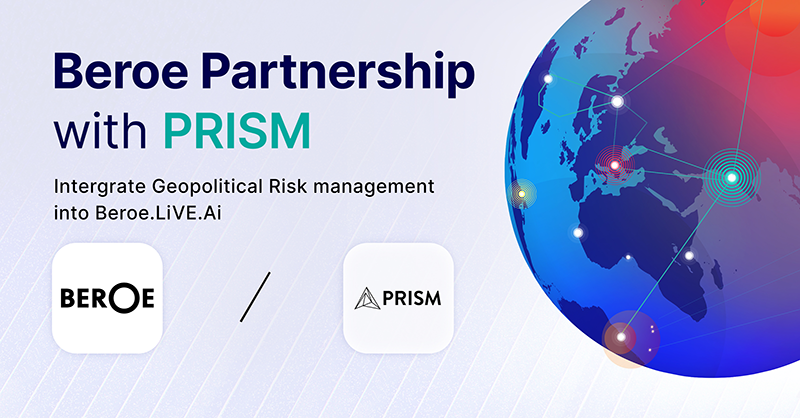Glass Containers Market Size to Reach 67 Million MT by 2023, Says Beroe Inc
Source: PR Newswire
RALEIGH, North Carolina, October 18, 2019 - The global market for glass containers is currently estimated to be 58.38 MMT and is expected to grow at a CAGR of 3-4 percent until 2023, according to Beroe Inc., a procurement intelligence firm. The glass containers market is driven by increasing consumption of alcoholic beverages in the developing markets with the pharmaceutical end-user segment expected to witness the fastest CAGR of 5–6 percent.
The APAC region has the largest market share of 35 percent in the global glass containers market, estimated to be growing at a CAGR of 4–5 percent to reach 25.32 MMT by 2023. APAC is followed by Europe with a 29 percent market share growing at a rate of 3-4 percent. The LATAM has the highest growth rate of 5 percent, with a current market share of 10 percent. Suppliers in the West are primarily investing to upgrade plant equipment, in order to achieve higher energy saving and reduce carbon emission.
Beroe, which is based in North Carolina, further stated that procurement experts can access this report on its recently launched market intelligence platform Beroe LiVE: live.beroeinc.com
Beverages hold over 70 percent market of container glass globally, and are driving the growth of the glass containers market, supported by rising disposable income, changing consumption pattern, and rising populations. Glass containers are regarded to have the highest premium appeal among its counterparts, and are infinitely recyclable with no loss of quality, further increasing their demand. The market faces challenges from high logistics costs due to the weight of the glass, risk of substitution from plastic bottles, liquid cartons, and PET formats, and an increase in labor costs in developed nations.
Glass packaging accounts for around 10 percent of the whole packaging sector. Relevant market trends include the preference of smaller pack sizes due to the increasing demand for single-serve packs and health awareness. Light weighting of packages is one of the focus areas for the convertors in the recent past, in order to achieve better material cost saving, reducing carbon footprint and logistics cost. Glass container weight has reduced by 30 percent over the past decade. Suppliers are gradually increasing cullet usage to reduce landfill and production costs.
Key Findings:
- Counterfeiting has become a critical issue across global beverage and food manufacturers. Various measures, like RFID tagging, digital printing, tamper-evident closures, and labels, are few techniques to tackle anti-counterfeiting.
- Pre-filled syringes are one of the major components of pharma packaging. Around 80 percent of PFS are made of glass and are growing at 12–13 percent CAGR till 2020.
- The rise in demand for Ocean-friendly bottles and jars to decrease marine pollution has led to glass containers becoming the choice for packaging as compared to plastic bottles.
- The global supply base is fragmented, with the top three suppliers having around 35 percent market share Owens-Illinoisis the largest glass manufacturer globally with around 19 percent production share.
- Glass containers are gradually getting substituted with alternative packaging formats, like bag-in-box, metal can, stand-up pouches and PET bottles, triggered by the low cost, durable, and lightweight nature of these packaging formats.
The research methodology adopted for the report included:
- Experts with twenty years of domain experience
- Interaction with buyers
- Inputs from supply chain partners
The cost components for glass containers are power & labor for 40–45 percent of the total costs, raw material for 30–35 percent of costs, (soda ash, limestone, sand, cullet) fuel and molds for 10–15 percent, logistics for 5–10 percent and other overhead charges for plants, machines, depreciation for 10–15 percent. Gross margins for a container glass producer are fairly less, around 8–10 percent.
The report also includes:
Market Analysis:
- Global Glass Container Market Overview
- Current Market Size
- Supply–Demand Trend and Forecast
- Regional Market Outlook
- Key End-use Industries
- Trade Dynamics
- Key Drivers and Constraints
- Regional Market Outlook: (Europe, North America, APAC, and LATAM)
- Current market size
- Demand trend and forecast
- Key end use industries
- Trade dynamics
Industry Analysis:
- Porters Five Forces Analysis
- Developed Markets
- Developing Markets
- Key Trends and Innovations
Supplier Analysis:
- Market Activity
- Capacity Expansions/Supply Base Development
- Mergers and Acquisitions
- Global Capacity Share by Suppliers
- Key Global Suppliers
- Key Regional Suppliers (North America, Europe, APAC, LATAM, Middle East, and Africa)
Supplier Profiles:
- Key Global Supplier Profiles (Ardagh, Owens-Illinois, Verallia, Anadolu Cam, Vidrala)
- Key Financial Performance Indicators
- SWOT Analysis
Cost Analysis and Industry Practices:
- Cost Drivers & Forecast
- Industry Sourcing Practices
Related News
View all
Beroe Makes Strategic Investment in Forestreet, Strengthening AI Capabilities and Driving Procurement Intelligence Innovation

Beroe introduces on-demand geopolitical risk analysis through PRISM enabling C-Suite to protect against ongoing supply chain disruptions
